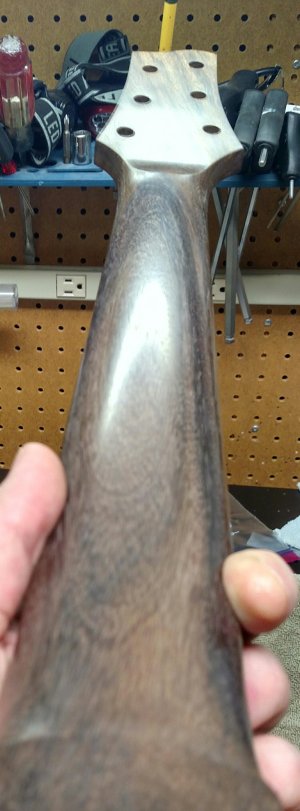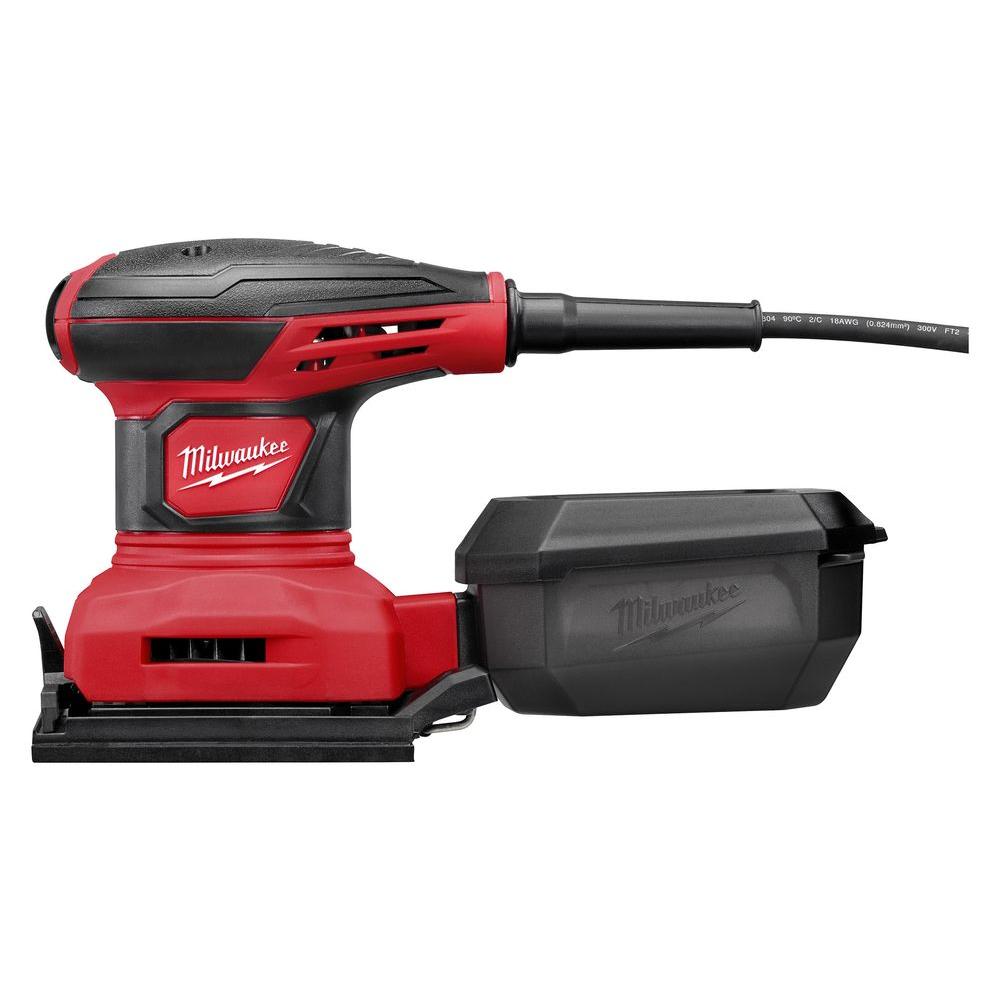Mark Anderson
Newbie
- Messages
- 14
I recently finished burnishing my new Superwide Warmoth neck with Indian Rosewood shaft and Black Ebony fingerboard. (I have big hands and have always found it difficult on standard sized necks to do partial barre chords.) I followed Cagey's prescription and sanded in 200 grit increments from 600-1200, then 1500 and finally 2000. I recommend that you use a tack cloth to clean the dust off the neck as you go, and I also dabbed the sandpaper on the tack cloth to pull the dust off. You can find tack cloths at any store that sells paints/stains. Mainly it makes the sandpaper last longer by preventing it from loading up so much with dust, which in turn makes the job go faster.
I am impressed with the results: if you hold it at the proper angle to the light it looks shiny like glass, and it feels slick without being grabby. I tried to include a photo, but with the dark rosewood I was not able to get a good shot.
I have a Carvin SH275 with a tung oiled mahogany neck, which was my favorite neck feel-wise (not shape-wise), but the burnished Warmoth neck is far superior (AND I got the shape I wanted). It is well worth the effort.
I did not burnish the headstock, but I'm having second thoughts and may go back and do that.
I am impressed with the results: if you hold it at the proper angle to the light it looks shiny like glass, and it feels slick without being grabby. I tried to include a photo, but with the dark rosewood I was not able to get a good shot.
I have a Carvin SH275 with a tung oiled mahogany neck, which was my favorite neck feel-wise (not shape-wise), but the burnished Warmoth neck is far superior (AND I got the shape I wanted). It is well worth the effort.
I did not burnish the headstock, but I'm having second thoughts and may go back and do that.




